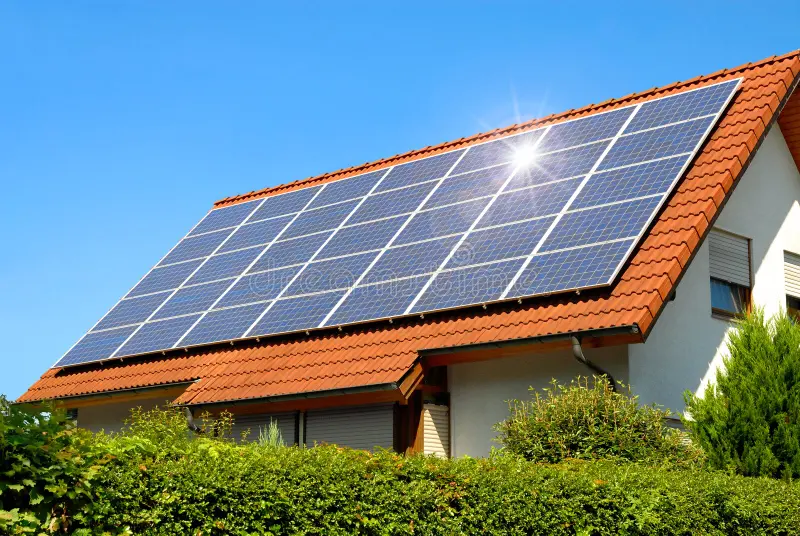
1. Introduction
The power of surveying is paramount in the armory of market researchers, especially for understanding consumer preferences, behaviors, and trends in the F&B industry. We need to understand the art of writing an effective survey; showing the difference between a question list and a high impact tool for knowledgeable decision making. Understand the objectives: Define the purpose and scope of the survey.
Before attempting to develop the survey, one should first determine what the goals are. Below discusses why one must decide the purpose and extent of the survey in line with the business and research objectives.
2.1 Defining the Key Research Questions
An effective way to design a questionnaire is first to identify the major research questions that a survey should answer. This subsection discusses how one can determine the critical questions that will help drive the design and components of the survey.
2.2 Setting Goals and Outcomes
This is a way of ensuring the specific goal for the survey has relevance to broader research objectives. We shall discuss why a well defined framework allows the appropriate questions that lead to relevant and actionable insights:.
3. Target Audience Definition: Tailoring Surveys to Specific Demographics
Definition of the target audience is the most important thing in the development of a survey that will give meaningful results. This section brings out the need for the definition of target demographics in order to make the survey relevant according to preferences and characteristics.
3.1 Profiling Demographic Segments
Demographic profiling is understanding the heterogeneity of the audience. We address the aspect of demographic profiling in framing the questions with audience specific considerations, thus enhancing the relevance of data collected.
3.2 Cultural and Regional Sensitivities
Food and beverage is an industry where cultural and regional sensitivities still hold strong across the world. This sub section addresses the concerns and considerations that go into making questionnaires culture-sensitive in order to secure the right representation and interpretation of the response.
4. Essential Basics of Survey Design: Drafting Clear and Concise Questions
Any good survey result rests on the backbone of its design. This section shall cover very basic essentials of how to draft a survey, by writing clear and concise questions that shall be unbiased and get to the point of the research.
4.1 Select Types of Questions Wisely
Different research objectives demand different question types. We will discuss the design and characteristics of common question types, which include multiple choice, open ended, Likert scale, and others, and how and when to use each type effectively.
4.2 Minimize Bias in Your Questions
Bias may result in exaggerated results of the questions in the survey. This chapter focuses on the importance of wording the questions in a neutral way that will not, in any way, sound judgmental. This enables one to minimize the collection of biased data and, in turn, protects the integrity of the data collected.
5. Creating a Logically Flowed-Out Survey: Cohesiveness
A well designed survey flows through the experience of the respondent, leading him through the interface logically and understandably. This section outlines how to take a survey through its flow from beginning to end, ensuring that a streamline and engaging participant experience is created.
5.1 Introductions and Welcome Messages
The introduction of the survey presents the spark that hooks participants into further engagement. We'll cover how to write friendly, informative introductions that greet your participants, establish rapport with them, and begin the survey experience on a positive note.
5.2 Logical Progression of Questions
Question statements contribute to the flow of the survey. This sub-section appropriately addresses the necessity of statement formulation, from generalized to specific questions, which can facilitate respondent easy follow up of the flow and answering of the questions in an accurate manner.
6. Survey Length and Timing
The optimal survey balances the need for information with sensitivity to the use of participants' time. This section focuses on the length and timing of a survey, maximizing the amount of information obtained while sustaining participant interest.
6.1 Participant Attention Span
Determining how much time participants are willing to dedicate to a questionnaire allows us to know what its optimal length should be. We will present ways to measure and acknowledge participants' attention in order to reduce questionnaire fatigue and achieve the best possible responses.
6.2 Timing for Higher Response Rates
This sub-section incorporates the timing considerations to deploy a survey so that response rates can be kept high. The right timing can ensure maximum participation and representation within the target audience.
7. Visual Appeal: Enhancing the Attractiveness of the Survey
Visual cues play an important role in making a survey visually appealing and effective as well. In this chapter, we will learn how to use visuals meaningfully so that the information communicated is not compromised, the interest of the participant is maintained, and comprehension of data is increased.
7.1 Integrating Visuals for Clarity
Visual aids enhance question clarity and the understanding of the respondent. We talk about ways in which to integrate such visuals strategically by avoiding confusing complexity while enhancing the clarity and overall efficacy of the survey.
7.2 Accessibility Considerations for Visual Content
Accessibility should be considered in all aspects of a survey design. This section deals with the following making visual contents more accessible, considerations for different needs, and making any survey experience as inclusive.
8. Pilot Testing: Uncovering and Resolving Survey Problems
Pilot testing should be done before a survey is conducted on a large scale. In this section we discuss pilot testing a tool of survey research that helps to refine question instruments on the basis of feedback and performance.
8.1 Selecting a Pilot Group
The selection of a representative pilot group is of prime importance in the identification of issues that may arise. We discuss how one can select an appropriate pilot group that shares characteristics with the intended audience of a survey.
8.2 Iterative Improvement through Feedback
Pilot testing should be further supported by iterative refinement based on feedback from participants. This subsection discusses the collecting, analyzing, and testing for necessary changes so that the final survey would be strong and effective enough.
9. Deployment Strategies: Maximizing Participation and Reach
Proper strategies for deploying the survey make the process more potent and maximize the number of participants. This section touches on various deployment strategies that currently exist and can be used, such as online platforms, e-mail campaigns, and social media platforms, to ensure that there is wide and diverse engagement with respondents.
9.1 Online Survey Platforms
Online survey tools are convenient and have a wider reach. In this section, we discuss online survey platform considerations, how to select an online survey platform, customization, and optimization of the platform's features and functions in order to improve the overall survey experience.
9.2 Integration of Email and Social Media Campaigns
Email and other social media campaigns can be used to increase responses. This section discusses how surveys can be integrated into email marketing sharing and social media campaigns to attract more participants and diversify the responses.
10. Data Analysis and Interpretation
Getting responses is, however not the end; extracting actionable insights is. This section reviews best practices in data analysis and interpretation that will help ensure the gathered information meaningfully contributes to research objectives and decision-making processes.
10.1 Quantitative vs. Qualitative Analysis Approaches
The choice of method is a function of what you want to find out. We make a distinction between quantitative and qualitative analysis and give advice about how to decide which, depending on which you want to use for your project.
10.2 Data Translation into Actionable Recommendations
In interpreting the results, survey data needs to be translated into meaningful recommendations. This sub section outlines how to draw meaningful insights, identify trends, and provide recommendations which might resonate with broader business strategies.
11. Ethical Considerations
Respecting the ethical principles of survey research is very important. This section will look through some of the more central ethical issues related to informed consent, confidentiality, and participant anonymity that bear upon the integrity and credibility of the research process. Informed consent lies at the heart of ethical survey research. We will examine the need for transparency in communicating a survey.
Trending Posts

Global Silver Nanoparticles Market
The global silver nanoparticles market was valued at $2.08 billion in 2020, and is projected to reach $4.1 billion by 2027, growing at a CAGR of ~17%

The Basic Pension Comes - Federal Cabinet Decides On the Pension Supplement
Financial security in old age is an issue that is causing stomach pains for more and more people in Germany. Low-wage earners fear the elderly. The ba

The Future of Artificial Intelligence
In recent years, the field of artificial intelligence (AI) has witnessed unprecedented growth and transformative advancements. As AI technologies

"LNG Bunkering" Here is something you must know!
In the current scenario of growing pollution, companies are trying to adapt more and more sustainable approach that not only gives eco-friendly result

Sailing into the future with Autonomous Ships
Autonomous Vehicles (AVs) are the uproar of this era. After airways, thanks to the companies like Tesla, that people are now getting used to see drive

Rising Demand For Uninterrupted Power Supply Is Expected To Drive The Power Rental Market
Todays world is totally reliant on electric power. There are many things which are not manageable without electricity. Power rental is a concept where

Rapidly growing IT industry coupled with the trend of bringing your own device (BYOD) is expected to provide new opportunities for growth of Cloud Collaboration
Cloud collaboration is the process of sharing and co-authoring the computer-based work through cloud technology

Fact check on UV Disinfection for COVID-19
Many regulatory authorities and bodies believe that UV disinfection technologies can play a role in a multiple barrier approach to reducing the transm

Vaccination: Vaccination Against Measles is Now Mandatory in Germany
The subject of compulsory vaccination has always heated peoples minds and caused emotionally charged discussions. The latest law in this area - the ob

The Global Ventilator Market Grows at a CAGR of 7.75 %
The Global Ventilator Market, which was at $688 million in the year 2016, is about to double by the year 2025, and reach a value of $1,347 million. Th
Recent Posts

Tariffs & Trade: Key Trends, Policies, and Market Impact
A tariff is a tax imposed by a government on imported or exported goods. It is primarily used to regulate international trade by either encouraging domestic production or generating revenue for the government.

The Global Buy Now Pay Later (BNPL) Market: Growth and Opportunities
The global Buy Now Pay Later (BNPL) market has emerged as a revolutionary financial solution, transforming how consumers approach shopping and payments. Offering flexibility and convenience, BNPL allows consumers to make purchases and pay.

Global Motorhome Market: Growth and Forecast
The motorhome market has gained significant momentum over the past decade, driven by rising interest in outdoor tourism, evolving consumer lifestyles, and advancements in vehicle design and technology. As a preferred option for travelers seeking.

The Global Poppy Seed Market: Growth and Trends
Poppy seeds, derived from the opium poppy plant (Papaver somniferum), have been a vital component in global culinary, pharmaceutical, and personal care industries for centuries. The global poppy seed market is gaining traction due to its versatility.

Global Plant Breeding and CRISPR Plants Market
The global food industry is facing immense pressure due to rising population levels, diminishing arable land, and the impact of climate change. Innovations in plant breeding, particularly the use of CRISPR technology, are reshaping the agricultural .

Global Pheromones Market – Trends, Opportunities, and Forecast
The global pheromones market has witnessed significant growth, primarily driven by the rising demand for eco-friendly pest control solutions in agriculture. Pheromones, natural chemicals emitted by insects and other organisms to communicate.

The Role of Technology in Oil and Gas Risk Management
In an industry as dynamic and complex as oil and gas, risk management is crucial for ensuring operational efficiency, regulatory compliance, and safety. Risk management software has become an indispensable tool for companies in this sector.

Global Smart Grid Sensors Market
The global energy landscape is undergoing a significant transformation, with smart grid technologies at the forefront. Smart grid sensors, a critical component of modern energy grids, enable efficient monitoring, energy distribution.

Global Photovoltaic Glass Market Research Report
The global photovoltaic (PV) glass market is experiencing unprecedented growth, driven by the accelerating shift towards renewable energy and the integration of sustainable materials in construction. This report delves into the market’s key growth.

Exploring the Growth of the Global Micro Solar Inverter Market
The Global Micro Solar Inverter Market is forecasted to expand significantly, growing from an estimated value of USD 4.8 billion in 2024 to USD 14.6 billion by 2030, with a CAGR of 24.2%. This growth reflects increased adoption of solar energy system
.png)